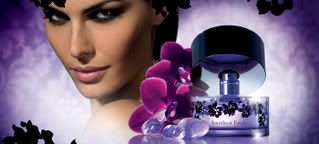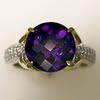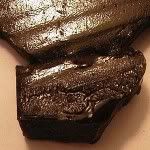
Perfume Shrine has already focused on oakmoss extensively (click for relevant article), so the other important material that needed tackling was labdanum. And so here we are today, trying to examine some of its facets.
First of all, what is it? It comes as a sticky dark brown resin exudate from two sources: from the shrubs Cistus ladaniferus (western Mediterranean) and Cistus creticus (eastern Mediterranean), both species of rockrose. Rockrose forms the Cistaceae (or rock-rose family), a rather small family of plants reknowned for their beautiful shrubs, covered by flowers at the time of blossom. It consists of about 170-200 species in eight genera and those are distributed primarily in the temperate areas of Europe and the Mediterranean basin, although they can be found in North and South America too in some instances. The flowers themselves have a faint odour and are not used in perfumery.
Labdanum is a natural oleoresin but it differs slightly from other oleoresins in that it contains more waxes and less volatile oil than most of the other natural oleoresins.
There is an ancient background to labdanum, as its etymology reveals: lôt in Hebrew (coming from a semetic root) which means resinous herb, ladunu in assyrian, lâdhan in Arabic, ledanon in Greek and ladanum/labdanum in Latin. Egyptians used it in their Kyphi mixtures whereas the Hebrews burned it in their temples as incense, so it had a ceremonial character.
It is even referenced in The Bible (as Balm of Gilead): The Ishmaelite caravan coming from Gilead to which Joseph was sold, was transporting labdanum (Genesis 37, 25). Subsequently, Jacob ordered his sons to offer labdanum, along with other local products, to their brother, now an Egyptian dignitary:
"And their father Israel said unto them, If it must be so now, do this; take of the best fruits in the land in your vessels, and carry down the man a present, a little balm, and a little honey, spices, and myrrh, nuts and almonds."(Genesis 43, 11) {found through Bible fragrances}.
It is believed that the above refers to the resin from the Pink Rockrose as "myrrh", although the two are not interchangeable. Myrrh per se is mentioned in the Bible (Psalm 45:8; Song of Solomon 4:14) and is believed to have been a mixture of natural myrrh (extracted from a tree in Africa and Arabia, like franckincense used to be got as well) and the oleoresin labdanum.
The Japanese use labdanum today in their Neriko mixtures, used during tea ceremony. The tradition is alive!
The use of ladbanum in medicine is well documented. Its high content in polyphenols makes it an excellent food supplement protecting the immune system.
In ancient times it was used for its properties of protection against bacteria and fungi.
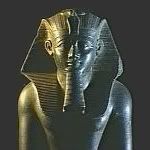
Greek physician Hippocrates prescribed "myrrh" (the mixture of natural myrrh and labdanum, as above) for sores and the Romans used it to treat worm infestations, the common cold, coughs, and some infections. Up to 3000 tons of frankincense and myrrh were transported each year during the height of Nabataean trade!
According to Cocker, J. D.; Halsall, T. G.; Bowers, A. (1956). "The chemistry of gum labdanum. I. Some acidic constituents" (Journal of the Chemical Society: 4259-62) and II. The structure of labdanolic acid" (Journal of the Chemical Society: 4262-71):
Labdane is a natural bicyclic diterpene that forms the structural core for a wide variety of natural products collectively known as labdanes or labdane diterpenes. The labdanes were so named because the first members of the class were originally obtained from labdanum, a resin derived from rockrose plants."
while
A variety of biological activities have been determined for labdane diterpenes including antibacterial, antifungal, antiprotozoal, and anti-inflammatory activities.(Studies in Natural Product Chemistry : Bioactive Natural Products, Part F, Atta-Ur-Rahman)
Theophrastus and Pliny mention labdanum as does Herodotus in his Historia, in the book "Thalia" (one of a total of 9,named after the Muses):
"Ledanum, which the Arabs* call ladanum, is procured in a yet stranger fashion. Found in a most inodorous place, it is the sweetest-scented of all substances. It is gathered from the beards of he-goats, where it is found sticking like gum, having come from the bushes on which they browse. It is used in many sorts of unguents, and is what the Arabs burn chiefly as incense.
Concerning the spices of Arabia let no more be said. The whole country is scented with them, and exhales an odour marvellously sweet."
{*please note that the Arabs referenced by Herodotus are ancient tribes inhabiting the region called Arabia and not today's islamic populace}.
But then why the confusion with opiates? The answer goes back to the Middle Ages and Paracelsus. A famous medical preparation of his own -which included gold, crushed pearls and other ingrendients (Opera, 1658, i. 492/2), but with opium as its chief component. Therefore the term is now used for the alcoholic tincture of opium (q.v.). The name was either invented by Paracelsus from Latin laudare (=to praise), or was a corrupted form of "ladanum" (from Persian ladan), a resinous juice or gum obtained from various kinds of the Cistus shrub, formerly used medicinally in external applications and as a stomach tonic." (Source 1911encyclopedia.org)
Labdanum's odour profile is highly complex. It is balsamlike, with woody, earthy, smoky, and even marshy undertones. Some even desrcibe it as ambergris-like, or leathery and honeylike with hints of plum or oakmoss after a rain. Usually it is referred to as ambery, but it is mostly used to render leather or ambergris notes, the latter especially after its ban on using the real animal-derived material, as there were concerns about the ethical production of it from sperm whales from which it originates (Ambergris is therefore very rare and costly if ethically harvested and is mostly synthesized in the lab. Please read this amber article for more info).
Its complexity is one of the reasons it has fascinated people since antiquity and it has been reported to affect the subconsious in profound ways. Its aromatheurapeutic value is that it is grounding, warming and sensual.
The method of extracting it is unusual and highly entertaing at that. Herodotus and Pliny report that labdanum was collected by combing the beards of goats, which were impregnated with the substance. The goats graze from the branches and the sticky resin gets stuck on their beards. Upon their return, their owners comb the resin our of their beards and extract the resin.
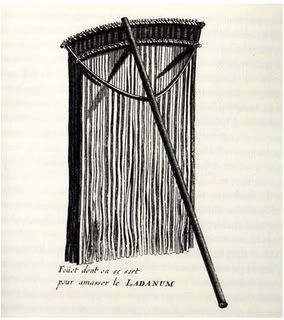
To this day labdanum is still gathered in Crete by driving goats into the thick forests overgrown with labdanum bushes. It is difficult work as it is best done in hot weather, under bright sunlight in the summer months. Sises is a Cretan village near Rethymnon, where such work is done to this day (coincidentally also the area from which El Greco/Dominikos Theotokopoulos comes).
You can read amazing detail on this matter on this site by Dimitris Niktaris: Labdanum Gr.
Today modern production is mainly concetrated in Spain and is done through easier means. However there is something to be said about the small, manual labour of cretan production that is of top quality.
The modern method involves boiling the leaves and twigs of this plant in water and the gum being skimmed off the surface and mixed with other resinous matter, which sinks to the bottom of the boiling water, as the resinoid is unsoluble in water. The extraction of the crude or cleaned labdanum gets done with a hydrocarbon solvent, whereas petroleum ether is being used increasingly because it yields a light amber resinoid which contains the most wanted odour principles in high concentration: cinnamon base - (isoeugenol) and labdanum resinoid. An absolute is obtained by solvent extraction whereas an essential oil is produced by steam distillation.
In perfumery it is used in many alloys, chypres notwithstanding and mixes well with hundreds of ingredients, interestingly one of which is lavender, another mediterranean herb.
Labdanum gum may contain up to 20% water, but this should be squeezed off or cautiously dried off. When in its fresh state, it is plastic but not pourable. It hardens on ageing, even to the point of becoming brittle. However if it is so at room temperature, it should be rejected as a starting material for the processing of labdanum derivatives.
Its shelf life is about 36 months and can be used in 10.0000 % in the fragrance concentrate.
One of the fragrances that focus on labdanum is Le Labo's Labdanum 18. Tagged as an enigma, to be used by both sexes, it focuses on the mysterious ambience that labdanum creates, fusing animalic and warm notes that meld on the skin.
Other fragrances that are rich with the note (but no guarantees on it always being naturally derived) are:
Donna Karan Essence Collection Labdanum ,Monia di Orio Lux, Dia for men by Amouage, L'eau Trois by Diptyque, Rien by Etat Libre d'Orange, Andy Tauer L'air du desert marocain ~Click for review~ (and reportedly it will feature in his Incense Duo as well), Patou pour Homme, Tabac Sport by Mäurer & Wirtz, Boucheron Pour Homme, Capucci Pour Homme, ST Dypont Signature pour homme, Eau Sauvage Extrême by Christian Dior, Whole Notes a floriental from Canadian perfumer Lyn Ayre of Coeur d’Esprit Natural Perfume, Prada, Prada Tendre and Prada Amber pour Homme, Mathew Williamson Incense, Ho Hang by Balenciaga, Jacques Bogart One man show, Ayala Moriel natural perfumes Ayalitta, Autumn and Democracy and Anya's Garden natural perfume Pan ~click for review~ that features real billy goat hair tincture.

Pics from bojensen.net, ladanisterion pic originally uploaded by labdanum.gr
.jpg)






